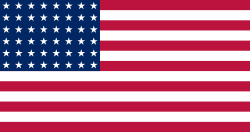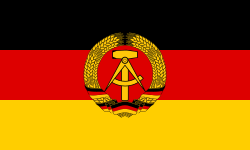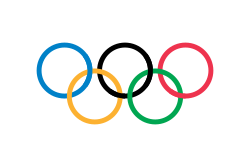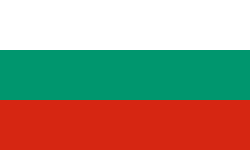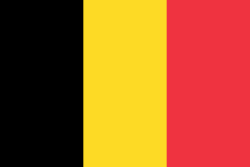Louise Ritter
| Louise Ritter | |||||||||||||||||||
| Voller Name | Dorothy Louise Ritter | ||||||||||||||||||
| Nation | |||||||||||||||||||
| Geburtstag | 18. Februar 1958 (66 Jahre) | ||||||||||||||||||
| Geburtsort | Dallas | ||||||||||||||||||
| Größe | 178 cm | ||||||||||||||||||
| Karriere | |||||||||||||||||||
|---|---|---|---|---|---|---|---|---|---|---|---|---|---|---|---|---|---|---|---|
| Disziplin | Hochsprung | ||||||||||||||||||
| Bestleistung | 2,03 m Freiluft 1,98 m Halle | ||||||||||||||||||
| Status | zurückgetreten | ||||||||||||||||||
| Karriereende | 1989 | ||||||||||||||||||
| Medaillenspiegel | |||||||||||||||||||
| |||||||||||||||||||
| |||||||||||||||||||
Louise Ritter (Dorothy Louise Ritter; * 18. Februar 1958 in Dallas, Texas) ist eine ehemalige US-amerikanische Hochspringerin.
Louise Ritter war von 1979 bis 1989 eine der besten Hochspringerinnen. Sie war für die Olympischen Spiele 1980 nominiert, konnte aber aufgrund des Olympiaboykotts nicht teilnehmen.
Bei den ersten Leichtathletik-Weltmeisterschaften 1983 in Helsinki wurde Ritter mit übersprungenen 1,95 Meter Dritte hinter Tamara Bykowa aus der Sowjetunion und der deutschen Ulrike Meyfarth.
Bei den Olympischen Spielen 1984 in Los Angeles belegte sie nur den achten Platz mit 1,91 Meter. Bei den Weltmeisterschaften 1987 gewann die Bulgarin Stefka Kostadinowa mit dem auch 2022 noch bestehenden Weltrekord von 2,09 Meter. Louise Ritter wurde mit 1,93 Meter Achte.
Die Bulgarin war auch die klare Favoritin für die Olympischen Spiele 1988. Ritter hatte im Juli 1988 mit 2,03 einen neuen US-Rekord aufgestellt und galt als Medaillenkandidatin. Im Finale am 30. September sprangen Kostadinowa und Ritter bis 2,01 Meter ohne Fehlversuch und standen damit als Erste und Zweite fest. Beide scheiterten dreimal an der Höhe von 2,03 und nun musste ein Stechen über den Olympiasieg entscheiden. Zuerst scheiterte Kostadinowa auch im vierten Versuch an 2,03 Meter, dann sprang Louise Ritter und überquerte die Latte. Louise Ritter war mit Einstellung ihres US-Rekords Olympiasiegerin geworden.
1989 trat Louise Ritter vom Leistungssport zurück. Sie arbeitet heute als Trainerin. Ihr Landesrekord wurde erst am 30. Mai 2010 von Chaunté Lowe mit 2,04 Meter in Cottbus überboten.
Louise Ritter ist 1,78 m groß und wog zu Wettkampfzeiten 60 kg.
Weblinks
- Louise Ritter in der Datenbank von World Athletics (englisch)
- Louise Ritter in der Datenbank von Olympedia.org (englisch)
| Personendaten | |
|---|---|
| NAME | Ritter, Louise |
| ALTERNATIVNAMEN | Ritter, Dorothy Louise (vollständiger Name) |
| KURZBESCHREIBUNG | US-amerikanische Hochspringerin |
| GEBURTSDATUM | 18. Februar 1958 |
| GEBURTSORT | Dallas, Texas |
Auf dieser Seite verwendete Medien
Pictograms of Olympic sports – . This is an unofficial sample picture. Images of official Olympic pictograms for 1948 Summer Olympics and all Summer Olympics since 1964 can be found in corresponding Official Reports.
Autor/Urheber: B1mbo, Lizenz: CC BY-SA 2.5
Zeichnung einer Goldmedaille, basierend auf Olympic rings.svg.
Autor/Urheber: B1mbo, Lizenz: CC BY-SA 2.5
Zeichnung einer Silbermedaille, basierend auf Olympic rings.svg.
Autor/Urheber: B1mbo, Lizenz: CC BY-SA 2.5
Zeichnung einer Bronzemedaille, basierend auf Olympic rings.svg.
Olympic Rings without "rims" (gaps between the rings), As used, eg. in the logos of the 2008 and 2016 Olympics. The colour scheme applied here was specified in 2023 guidelines.
The Canadian Red Ensign used between 1921 and 1957.
This image has compared for accuracy (mainly colors) using an image from World Statesmen. The only change is making the maple leaves green from red. This image has compared for accuracy (mainly colors) using an image from World Statesmen. The most recent version of this image has changed the harp into one with a female figure; see [http://flagspot.net/flags/ca-1921.html FOTW
The Canadian Red Ensign used between 1921 and 1957.
This image has compared for accuracy (mainly colors) using an image from World Statesmen. The only change is making the maple leaves green from red. This image has compared for accuracy (mainly colors) using an image from World Statesmen. The most recent version of this image has changed the harp into one with a female figure; see [http://flagspot.net/flags/ca-1921.html FOTW
US Flag with 48 stars. In use for 47 years from July 4, 1912, to July 3, 1959.
Flag of Hungary from 6 November 1915 to 29 November 1918 and from August 1919 until mid/late 1946.
Flag of South Africa, used between 1928 and 1982. It is identical to the 1982 to 1994 version except that the shade of blue is darker. It is also known as the "Oranje-Blanje-Blou".
Die Staatsflagge der Deutschen Demokratischen Republik, vom 1. Oktober 1959 bis 3. Oktober 1990
Olympische Flagge
Flag of Romania (24 September 1952 - 21 August 1965)

Construction sheet of the Flag of Romania as depicted in Decree nr. 972 from 5 November 1968.
- l = 2/3 × L
- C = 1/3 × L
- S = 2/5 × l
Icon logo of World Athletics
Autor/Urheber: B1mbo, Lizenz: CC BY-SA 3.0
Flag of the Pan American Sports Organization (PASO)










